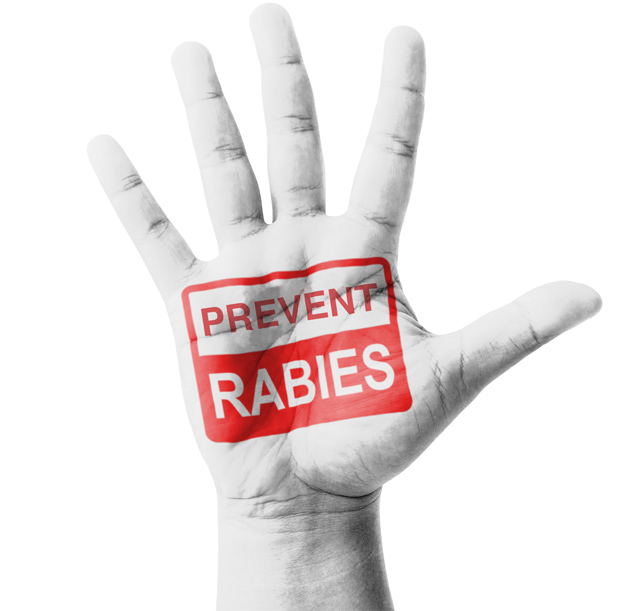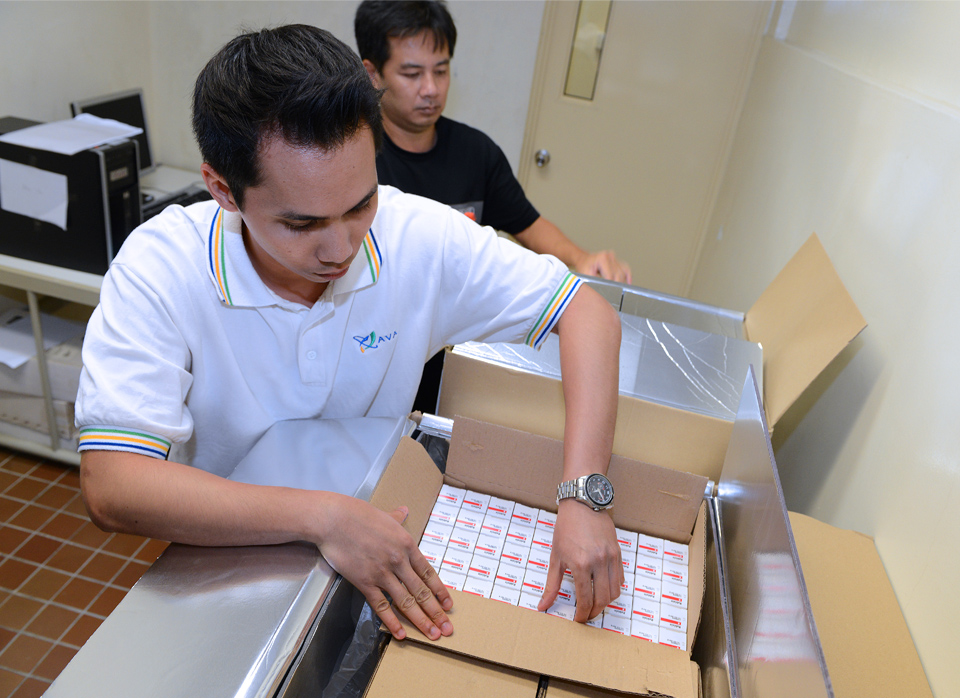our local stockpile.
On our Toes against Rabies:
Gearing up Emergency
Preparedness
As the national authority on animal health, AVA exercises a range of strategies to ensure public health and safeguard against the introduction of animal diseases, such as rabies. Rabies is a fatal viral disease and can be spread to humans through the saliva or a bite from an infected animal. The OIE (World Organisation for Animal Health) reports 50,000 deaths from rabies a year due to exposure to infected animals.
Singapore has been free from rabies since 1953. This disease-free status is maintained mainly due to AVA’s rigorous system of quarantine and health checks on imported animals. This system includes pre-export vaccinations and tests, as well as post arrival checks and quarantines.
However, the disease is endemic to the region. We must not let our guard down but remain vigilant to rein in an outbreak of rabies if it occurs. On 9 September 2014, AVA conducted its first exercise to test how prepared it is in dealing with an emergency rabies outbreak.
 Exercise Lyssa I examined several aspects of AVA’s readiness in
Exercise Lyssa I examined several aspects of AVA’s readiness in handling an outbreak of rabies, such as feasibility of rabies control
policies and operations support plans.
Code-named “Exercise Lyssa I”, the table top exercise examined several aspects of AVA’s operational readiness, such as feasibility of rabies control policies and operations support plans. We also tested our Alert-Recall-Mobilise System, which allows AVA to mass alert specific group of stakeholders via email, SMS, and automated calls.
In addition, AVA tested the activation and delivery of 5,000 doses of animal rabies vaccines from the OIE Regional Vaccine Bank for Rabies in Asia. The vaccines arrived in Singapore on 17 September and would serve as our local stockpile. In the event of a rabies outbreak in Singapore, an additional 345,000 doses of animal rabies vaccine from the vaccine bank are available for rapid deployment to Singapore.
The key objectives of Exercise Lyssa I were met and through the table top exercise, we were able to identify areas that needed strengthening in our rabies contingency plan.








